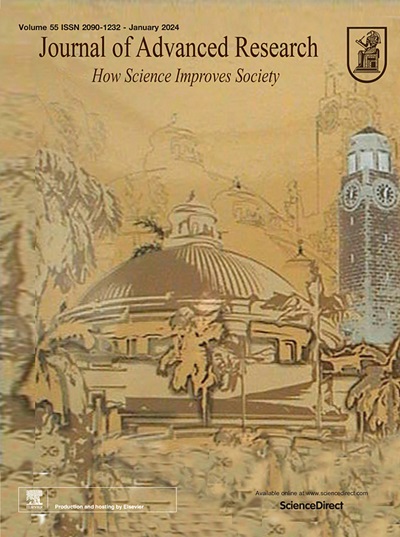Integrated deep eutectic system enrichment and AI-assisted high-throughput visual detection for Hg2+ in environmental samples
IF 13
1区 综合性期刊
Q1 MULTIDISCIPLINARY SCIENCES
引用次数: 0
Abstract
Introduction
Mercury ion (Hg2+), a prevalent heavy metal, is commonly found in environmental soil and water. Its interaction with sulfhydryl groups in proteins or lipids can cause oxidative stress and disrupt calcium homeostasis. This leads to severe health issues, including digestive, nervous, and immune system damage. Conventional Hg2+ detection methods, such as ICP-MS and AAS, require complex procedures and bulky instruments, limiting their applicability for real-time, on-site analysis. AI-assisted detection methods have emerged as promising solutions, offering portability and rapid detection capabilities. Deep eutectic solvents (DESs), particularly hydrophobic DESs (HDESs), provide an environmentally friendly alternative for enriching and detecting metal ions.Objectives
This study aims to develop a portable, cost-effective, and environmentally friendly colorimetric sensing platform based on a silver nanoparticles hydrophobic deep eutectic system (AgNPs-HDES) for Hg2+ enrichment and detection.Methods
AgNPs-HDES was synthesized using ethylene glycol containing silver nanoparticles (AgNPs-EG) as the hydrogen bond donor. Electrostatic potential maps (ESP) and density functional theory (DFT) were employed to elucidate its synthesis and enrichment mechanisms. Smartphone image acquisition combined with YOLOv8-based AI software enabled high-throughput colorimetric analysis for Hg2+ detection.Results
A progressive color change from brownish-yellow to colorless was observed as Hg2+ concentration increased, eliminating hydrophilic interference and improving sensitivity. The AgNPs-HDES platform demonstrated a linear detection range of 1–40 μmol·L-1 (R2 = 0.9889) and a detection limit of 0.23 μmol·L-1. Recovery rates in real samples, including lake water, soil, seawater and industrial sewage, ranged from 90.3 % to 123 %.Conclusion
The established platform enables portable, rapid, and highly accurate Hg2+ detection across multiple environmental samples simultaneously. This AI-assisted, high-throughput detection system presents a valuable tool for environmental monitoring and pollutant tracking.

集成深共晶系统富集和人工智能辅助高通量视觉检测环境样品中的Hg2+
汞离子(Hg2+)是一种普遍存在的重金属,常见于环境土壤和水中。它与蛋白质或脂质中的巯基相互作用可引起氧化应激并破坏钙稳态。这会导致严重的健康问题,包括消化系统、神经系统和免疫系统的损害。传统的Hg2+检测方法,如ICP-MS和AAS,需要复杂的程序和笨重的仪器,限制了它们对实时现场分析的适用性。人工智能辅助检测方法已经成为有前途的解决方案,提供便携性和快速检测能力。深共晶溶剂(DESs),特别是疏水性DESs (hess),为富集和检测金属离子提供了一种环保的替代方法。本研究旨在开发一种基于银纳米粒子疏水深共晶系统(AgNPs-HDES)的便携式、经济、环保的比色传感平台,用于Hg2+的富集和检测。方法以含银纳米颗粒(AgNPs-EG)的乙二醇为氢键供体合成sagnps - hdes。利用静电势图(ESP)和密度泛函理论(DFT)阐明了其合成和富集机理。智能手机图像采集与基于yolov8的AI软件相结合,实现了高通量比色分析,用于Hg2+检测。结果随着Hg2+浓度的增加,颜色逐渐由棕黄色变为无色,消除了亲水性干扰,提高了灵敏度。AgNPs-HDES平台的线性检测范围为1 ~ 40 μmol·L-1 (R2 = 0.9889),检出限为0.23 μmol·L-1。在湖泊水、土壤、海水和工业污水等实际样品中,回收率为90.3 % ~ 123 %。结论所建立的Hg2+检测平台可实现多种环境样品的便携式、快速、高精度检测。这种人工智能辅助的高通量检测系统为环境监测和污染物跟踪提供了有价值的工具。
本文章由计算机程序翻译,如有差异,请以英文原文为准。
求助全文
约1分钟内获得全文
求助全文
来源期刊

Journal of Advanced Research
Multidisciplinary-Multidisciplinary
CiteScore
21.60
自引率
0.90%
发文量
280
审稿时长
12 weeks
期刊介绍:
Journal of Advanced Research (J. Adv. Res.) is an applied/natural sciences, peer-reviewed journal that focuses on interdisciplinary research. The journal aims to contribute to applied research and knowledge worldwide through the publication of original and high-quality research articles in the fields of Medicine, Pharmaceutical Sciences, Dentistry, Physical Therapy, Veterinary Medicine, and Basic and Biological Sciences.
The following abstracting and indexing services cover the Journal of Advanced Research: PubMed/Medline, Essential Science Indicators, Web of Science, Scopus, PubMed Central, PubMed, Science Citation Index Expanded, Directory of Open Access Journals (DOAJ), and INSPEC.
 求助内容:
求助内容: 应助结果提醒方式:
应助结果提醒方式:


